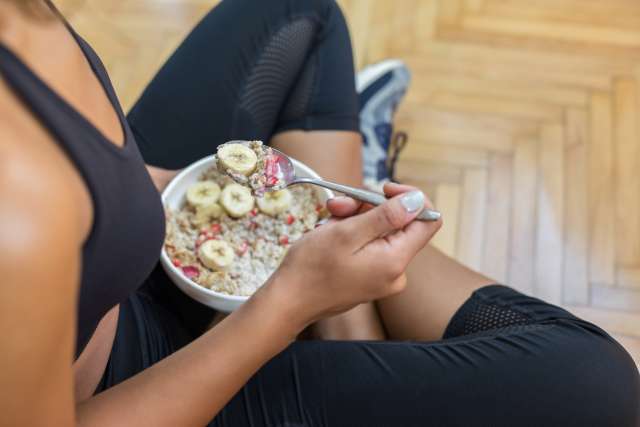There is no shortage of diet, exercise and wellness advice floating around the internet — especially on social media. But one plan that’s been popularized on TikTok may have some staying power.
That plan is called the 30-30-30 rule. It’s a simple but catchy idea that encourages you to eat 30 grams of protein within 30 minutes of waking up and then get 30 minutes of low-intensity exercise.
The 30-30-30 rule now has millions of followers on TikTok. Many people are posting their experiences, including inspiring transformations and weight loss they attribute to following the plan.
How to follow the 30-30-30 diet
Part of the appeal of the 30-30-30 diet is that it’s very easy to follow. You don’t have to radically change your eating habits, count calories or do any extreme exercise.
There are just three steps to it:
- Eat 30 grams of protein at breakfast.
- Eat breakfast within 30 minutes of waking up.
- After breakfast, get 30 minutes of low-intensity, steady-state exercise.
Can the 30-30-30 rule help with weight loss?
Social media success stories aside, the 30-30-30 plan has not been the subject of any major scientific studies. Although you may hear about miraculous results, there’s no guarantee you will see the same for yourself.
Some aspects of the plan can encourage weight loss. Numerous have documented the benefits of regularly consuming breakfast when you’re trying to lose or maintain weight. Research supports the idea that breakfast eaters are better able to maintain their weight than chronic breakfast skippers.
There’s likely no magic associated with getting exactly 30 grams of protein at breakfast. But there are benefits to eating protein first thing in the morning. A high-protein breakfast will keep you fuller longer than one composed mostly of carbohydrates. That may help reduce cravings for a mid-morning snack.
Benefits of the 30-30-30 diet
Probably the biggest benefit of following the 30-30-30 rule is that it encourages you to create some healthy habits. And following the plan daily helps those habits stick.
Eating a healthy, high-protein breakfast is a good way to kickstart your day. Getting 30 minutes of exercise every day also puts you ahead of the approximately 25% of Americans who don’t get any exercise. And while evidence on the timing of exercise for weight loss is inconclusive, some have found a benefit to working out in the morning.
Are there any risks to following the 30-30-30 rule?
Unlike some viral TikTok trends, there are no dangers involved in trying the 30-30-30 diet. The only real risk may be that you simply don’t achieve the weight management results you’re hoping for.
The downsides of this diet are the same things that make it so popular and easy to follow. You don’t have to eat specific foods or restrict your calorie intake. That means you can easily end up eating too many calories throughout the day. And if your high-protein breakfast consists of processed foods that are high in saturated fat (such as bacon or sausage), you aren’t doing your overall health any favors.
The 30-30-30 plan calls for low-intensity, steady-state exercise, which means a brisk walk or other aerobic activity at a pace that allows you to carry on a conversation. There’s no denying that 30 minutes a day of any type of exercise is great for your overall health. But keep in mind that most recommendations call for at least 30 minutes a day of moderate-intensity exercise — which is more intense than the 30-30-30 plan calls for. And some shows that intervals of high-intensity exercise can aid in the loss of body fat.
Overall, following the 30-30-30 rule is unlikely to have any negative effects on your health. And if you focus on healthy eating in addition to the other rules, you might even drop a few pounds.



